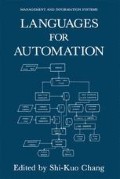Abstract
The ANSI/SPARC DBSSG(1) took a major step forward for the database community when it identified the need for a conceptual schema in the context of a three-schema framework for database systems. The three-schema framework allows a clear separation of the conceptual schema from the external schema and the internal physical schema, resulting in databases which are flexible and adaptable to changes. A new step forward needs to be taken if the database system framework is to allow databases to be flexible and adaptable to changes of the conceptual schema.
Access this chapter
Tax calculation will be finalised at checkout
Purchases are for personal use only
Preview
Unable to display preview. Download preview PDF.
References
D. TsichritzIs, and A. Klug (Eds.), The Ansi/X3/Sparc Dbms framework, Inf. Syst. 3(3), 173–191, (1978).
D. D. Chamberlin et al.,Sequel 2: A unified approach to data definition, manipulation, and control, IBMJ. Res. Dev. 20(6), 560–575.
E. F. Codd, Extending the database relational model to capture more meaning, ACM TODS 4 (4), 397–434, (1979).
J. J. Van Griethuysen (Ed.), Iso TC97/SC5/WG3: Concepts and terminology for the conceptual schema and information base, Ansi, 1982.
P. Hall, J. OwLett, and S. Todd, Relations and entities, in G. M. Nijssen (Ed.) Modeling in Data Base Management Systems, North-Holland, Amsterdam, 1976.
D. Hofstadter, Gödel, Escher & Bach, Basic Books, New York, 1979.
D. Jefferson, Reference model priorities and definition, Note for Iso/TC97/SC5/ WG5, No. 106, National Bureau of Standards, Washington, D.C., 1983.
W. Kent, Data and Reality, North-Holland, Amsterdam, 1978.
L. Mark and A. Leick, Ideas for new conceptual schema languages, in H. Kanagassalo (Ed.), First Scandinavian Research Seminar on Information Modeling and Data Base Management, University of Tampere, Finland, 1982, Series B, Vol. 17.
L. Mark, What is the binary relationship approach?, in C. G. Davis (Ed.), Entity-Relationship Approach to Software Engineering, North-Holland, Amsterdam, 1983.
L. Mark and N. Roussopoulos, Integration of data, schema and meta-schema in the context of self-documenting data models, in C. G. Davis (Ed.), Entity-Relationship Approach to Software Engineering, North-Holland, Amsterdam, 1983.
L. Mark and N. Roussopoulos, Fall and rise of an Ansi/Sparc Dbms framework, Working Note for the Ansi/Sparc/X3 Database Architecture Framework Task Group, 1984.
L. Mark Self-describing database systems-formalization and realization,Ph.D. dissertation, Department of Computer Science, University of Maryland, College Park, Maryland, April, 1985.
L. Mark and N. Roussopoulos, The reference model, Working Note for the Ansi/ Sparc/X3 Database Architecture Framework Task Group, 1984.
National Bureau of Standards, An architecture for database management standards, Prepared by Computer Corporation of America, Report No. Nbs 500–86, 1982.
G. M. Nijssen, An architecture for knowledge base software, presented to the Australian Computer Society, Melbourne, July 30, 1981.
N. RoussopouLos, View indexing in relational database, ACM Trans. Database Syst. 7 (2), 258–290 (1982).
N. RoussopouLos, The logical access path schema of a database, IEEE Trans. Software Eng. SE-8(6), 563–573 (1982).
N. RoussopouLos, A self-documenting relational model, TR-1264, Computer Science Department, University of Maryland, College Park, April, 1983.
N. Roussopou Los and L. Mark, A self-describing meta-schema for the RM/T data model, In IEEE Workshop on Languages for Automation, IEEE Computer Society Press, New York, 1983.
N. Roussopout.os, C. Bader, and J. O’Conner, Adms—A self-describing and self-documenting relational database system, Department of Computer Science, University of Maryland, College Park, Maryland, August, 1984.
N. RoussopouLos and L. Mark, A framework for self-describing and self-documenting database systems, Nbs Trends and Application Conference, 1984.
D. Smith and J. Smith, Database abstractions: Aggregation and generalization, ACM TODS 2 (2), 105–133, (1977).
W. Truszkowski, Private communication, 1984.
M. M. Zloof, Query by Example: The innovation and definition of tables and forms, Proceedings on Very Large Database Conference, 1975.
Author information
Authors and Affiliations
Editor information
Editors and Affiliations
Rights and permissions
Copyright information
© 1985 Springer Science+Business Media New York
About this chapter
Cite this chapter
Roussopoulos, N., Mark, L. (1985). Self-Describing and Self-Documenting Database Systems. In: Chang, SK. (eds) Languages for Automation. Management and Information Systems. Springer, Boston, MA. https://doi.org/10.1007/978-1-4757-1388-6_13
Download citation
DOI: https://doi.org/10.1007/978-1-4757-1388-6_13
Publisher Name: Springer, Boston, MA
Print ISBN: 978-1-4757-1390-9
Online ISBN: 978-1-4757-1388-6
eBook Packages: Springer Book Archive

